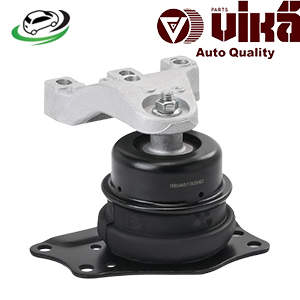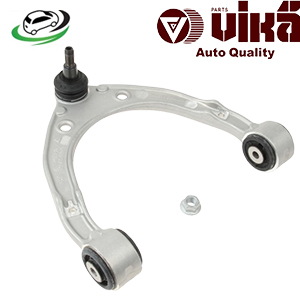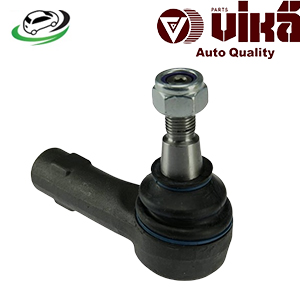-8%
Get AUDI Q7 / VW Touareg V6/TDI Tie Rod End 7L0422818D
A vehicle’s steering system is a vital component that allows the driver to control the direction of the car. The tie rod end is an integral part of this system, connecting the steering rack to the steering knuckle on each front wheel. Despite its relatively small size, the tie rod end plays a crucial role in ensuring proper steering and vehicle stability. Understanding how tie rod ends function, their benefits, and the importance of maintaining them can help ensure safe and efficient vehicle operation.
This comprehensive guide will cover the function of tie rod ends, their types, benefits, common symptoms of failure, and maintenance tips.
Function of a Tie Rod End
The tie rod end is a critical component of the steering linkage system, responsible for transmitting the force generated by the driver’s steering input to the front wheels of the vehicle. It connects the steering rack (part of the steering gear mechanism) to the steering knuckle, which is attached to the wheel hub. Through this connection, tie rod ends facilitate the turning of the wheels, enabling the vehicle to steer in the desired direction.
Key functions of a tie rod end include:
- Steering Control: The primary role of the tie rod end is to convert the rotational movement of the steering wheel into lateral movement that turns the wheels. When the driver turns the steering wheel, the steering rack moves the tie rod end, which then pivots to adjust the angle of the wheels. The tie rod end ensures the wheels turn in response to the driver’s input, allowing the vehicle to navigate corners and maintain a straight path.
- Alignment Maintenance: Tie rod ends are essential for maintaining the proper alignment of the vehicle’s front wheels. They help ensure that the wheels stay parallel to each other, which is critical for tire longevity and vehicle stability. Proper alignment also contributes to the even wear of tires, improving overall handling and safety.
- Absorbing Impact and Vibration: The tie rod end absorbs some of the impact and vibration from the road surface, particularly when driving over uneven terrain, potholes, or bumps. This helps prevent the transmission of harsh vibrations to the steering wheel and maintains a smoother driving experience.
- Supporting Suspension Movement: While primarily a part of the steering system, the tie rod end also plays a supporting role in the vehicle’s suspension system. The tie rod end allows for the vertical movement of the suspension while keeping the wheels aligned with the steering input. This function is particularly important when driving over uneven surfaces or when the suspension is compressed or extended.
Materials and Construction of Tie Rod Ends
Tie rod ends are designed to be durable and withstand the high stress and forces applied to them during driving. They are typically constructed from high-strength materials to ensure longevity and reliable performance.
- Metal Components: The body of the tie rod end is usually made from forged steel or cast iron, both of which are extremely strong and resistant to wear. These materials are chosen for their ability to withstand the constant stress and forces applied by steering and suspension movements.
- Ball Joints: At the heart of the tie rod end is a ball-and-socket joint, which allows for the pivoting motion necessary for steering. The ball joint is encased in a protective housing and is lubricated to reduce friction and wear. The ball joint is typically made from hardened steel to ensure smooth and precise movement.
- Protective Boots: A rubber or polyurethane dust boot covers the ball joint to protect it from dirt, moisture, and debris, which could cause premature wear or corrosion. These boots are designed to keep contaminants out while retaining the lubricating grease inside the joint.
Types of Tie Rod Ends
Tie rod ends come in different designs depending on the type of vehicle and the steering system configuration. The two most common types are inner tie rod ends and outer tie rod ends, both of which work together to ensure proper steering function.
- Inner Tie Rod End: The inner tie rod end connects the steering rack to the outer tie rod end. It is typically located closer to the center of the vehicle and is enclosed within the steering system, which helps protect it from external elements. Inner tie rod ends are responsible for transmitting the lateral force from the steering rack to the outer tie rod end.
- Outer Tie Rod End: The outer tie rod end connects the inner tie rod end to the steering knuckle, which is attached to the wheel hub. The outer tie rod end is located near the wheel and is exposed to the elements, making it more susceptible to wear and damage. It plays a pivotal role in turning the wheels and is often the component that requires replacement when tie rod issues arise.
Benefits of a Properly Functioning Tie Rod End
When tie rod ends are in good condition, they offer several key benefits that contribute to the overall performance and safety of the vehicle.
- Precise Steering: A properly functioning tie rod end ensures precise steering control, allowing the driver to accurately guide the vehicle in the desired direction. This precision is especially important when making sharp turns or maneuvering at high speeds, as it provides confidence and stability.
- Enhanced Vehicle Stability: Tie rod ends help maintain the alignment of the front wheels, which is essential for vehicle stability, especially during cornering and lane changes. Proper alignment reduces the risk of the vehicle pulling to one side and helps prevent accidents.
- Tire Longevity: By maintaining proper wheel alignment, tie rod ends contribute to even tire wear. Uneven tire wear can lead to reduced traction, poor handling, and a shortened tire lifespan. Regular maintenance of the tie rod ends helps prolong tire life, saving the vehicle owner money in the long run.
- Improved Ride Comfort: A well-functioning tie rod end helps absorb some of the vibrations from the road surface, improving ride comfort. This is particularly noticeable on rough or uneven roads, where damaged tie rod ends can lead to a harsher, less comfortable ride.
- Fuel Efficiency: Proper wheel alignment, facilitated by healthy tie rod ends, can improve fuel efficiency. Misaligned wheels create additional rolling resistance, which requires more energy (fuel) to maintain the same speed. By keeping the wheels aligned, tie rod ends help reduce fuel consumption.
Symptoms of a Worn or Damaged Tie Rod End
Like any other vehicle component, tie rod ends can wear out over time, leading to a variety of symptoms. Identifying these symptoms early is crucial to prevent further damage to the steering system and ensure safe driving.
- Uneven Tire Wear: One of the most common signs of a failing tie rod end is uneven tire wear. If the tie rod end is worn or loose, it can cause the wheels to become misaligned, resulting in irregular tire wear patterns. This can manifest as one tire wearing more on the inside or outside edge compared to the other tires.
- Loose or Unresponsive Steering: A worn tie rod end can cause the steering to feel loose or unresponsive. You may notice excessive play in the steering wheel, making it more difficult to control the vehicle, especially at high speeds. This is a dangerous condition that should be addressed immediately.
- Clunking or Knocking Noise: If a tie rod end is worn or damaged, you may hear a clunking or knocking noise, particularly when turning the steering wheel or driving over bumps. This noise occurs when the ball joint inside the tie rod end is loose or worn, allowing it to move more than it should.
- Steering Wheel Vibration: A failing tie rod end can cause the steering wheel to vibrate, especially at higher speeds. This vibration is caused by the wheels being out of alignment or the tie rod end not holding the steering components firmly in place.
- Vehicle Pulling to One Side: If a tie rod end is severely worn or damaged, the vehicle may pull to one side while driving. This is due to the misalignment of the wheels caused by the faulty tie rod end. The vehicle may drift in one direction, requiring constant steering correction by the driver.
Maintenance and Replacement of Tie Rod Ends
Regular maintenance of tie rod ends is essential to ensure the longevity of the steering system and prevent premature wear. Here are some maintenance tips and considerations for tie rod ends:
- Regular Inspections: Tie rod ends should be inspected during routine vehicle maintenance, especially during wheel alignments or tire rotations. A visual inspection can reveal signs of wear, such as torn dust boots, loose components, or excessive play in the ball joint.
- Lubrication: Some tie rod ends are designed with grease fittings, allowing for regular lubrication. Applying fresh grease to the ball joint helps reduce friction, wear, and corrosion. If your tie rod ends have grease fittings, they should be lubricated during oil changes or other maintenance intervals.
- Replacement Timing: Tie rod ends do not have a specific replacement interval, as their lifespan depends on driving conditions, vehicle usage, and maintenance. However, tie rod ends should be replaced if they exhibit any of the symptoms of wear or damage. In high-mileage vehicles or those frequently driven on rough roads, tie rod ends may wear out more quickly.
- Professional Alignment: After replacing tie rod ends, it is essential to have a professional wheel alignment performed. Even slight misalignments can lead to uneven tire wear and poor handling. A proper alignment ensures that the wheels are set to the manufacturer’s specifications and that the vehicle tracks straight.
- High-Quality Replacement Parts: When replacing tie rod ends, it is important to choose high-quality parts that meet or exceed OEM (Original Equipment Manufacturer) standards. High-quality tie rod ends are made from durable materials and are designed to withstand the rigors of everyday driving. Investing in quality parts can help prevent premature failure and improve overall vehicle performance.
Conclusion
In summary, the tie rod end is a critical component of the vehicle’s steering system, responsible for transmitting steering input from the driver to the wheels. It plays a key role in ensuring precise steering control, maintaining wheel alignment, and providing a comfortable ride. Regular maintenance, timely inspections, and replacement of worn or damaged tie rod ends are essential for safe and efficient vehicle operation. By addressing tie rod end issues promptly, you can prevent further damage to the steering and suspension systems, improve vehicle handling, and enhance overall safety.
Follow us on Facebook for more parts.




Reviews
Clear filtersThere are no reviews yet.